The 820bhp Ferrari 12Cilindri Revs To 9,500rpm
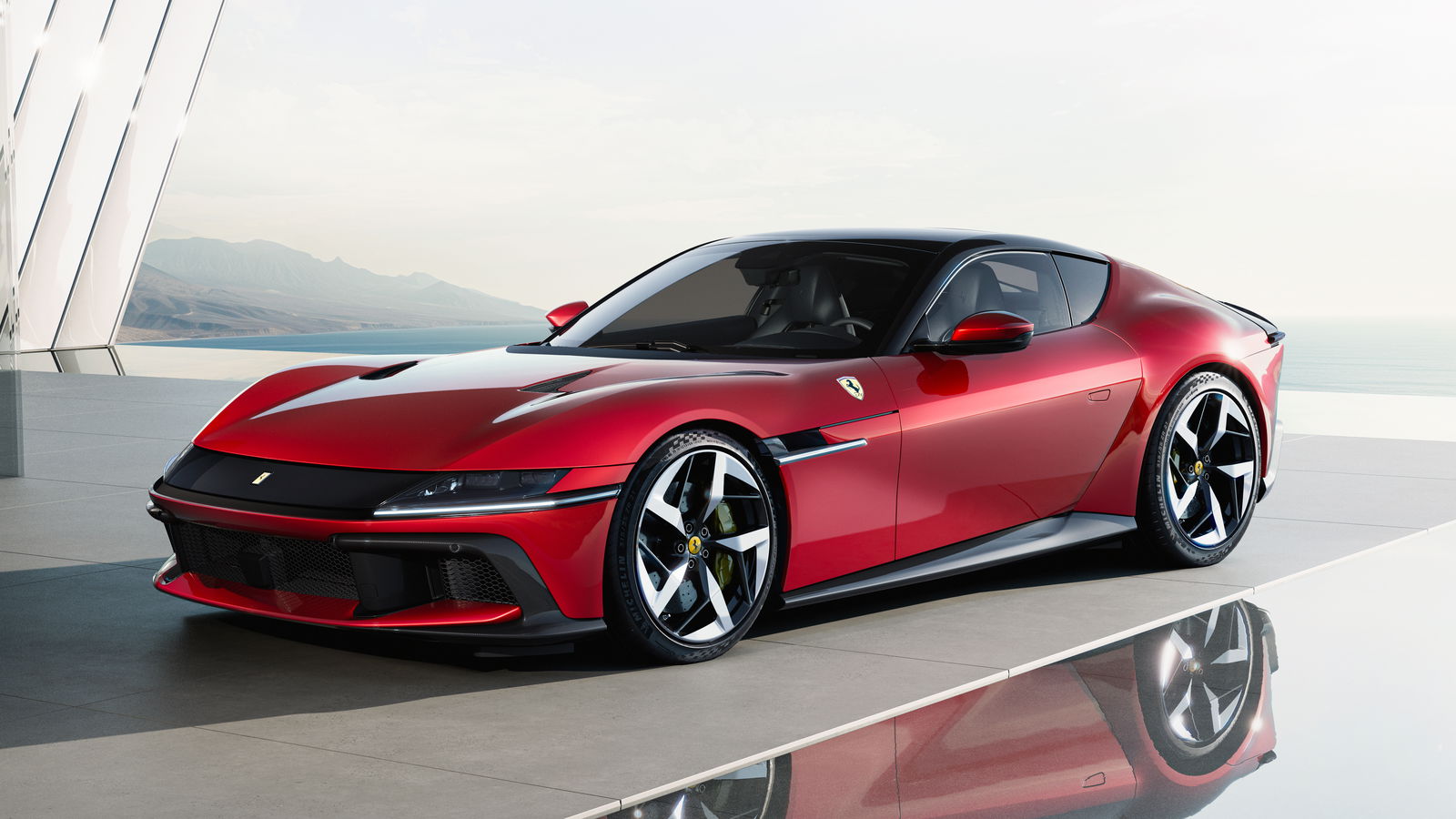
Right, first up, a quick pronunciation guide: it’s not ‘Twelve Cilindri’, it’s ‘Dodici Cilindri’. And because it’s Italian, both of those Cs are voiced with a ‘ch’ sound. ‘Doe-di-chi chi-lin-dri’. Only in Italy can they get away with giving cars such literally descriptive names.
Then again, you can see why Ferrari wants to celebrate the engine that powers its new flagship front-engined GT. It wasn’t that long ago that it seemed the V12 engine was about to disappear completely from new cars, but a select few manufacturers are keeping the faith. Last year came the Lamborghini Revuelto and just this week, Aston Martin announced that a new V12 would appear later this year.
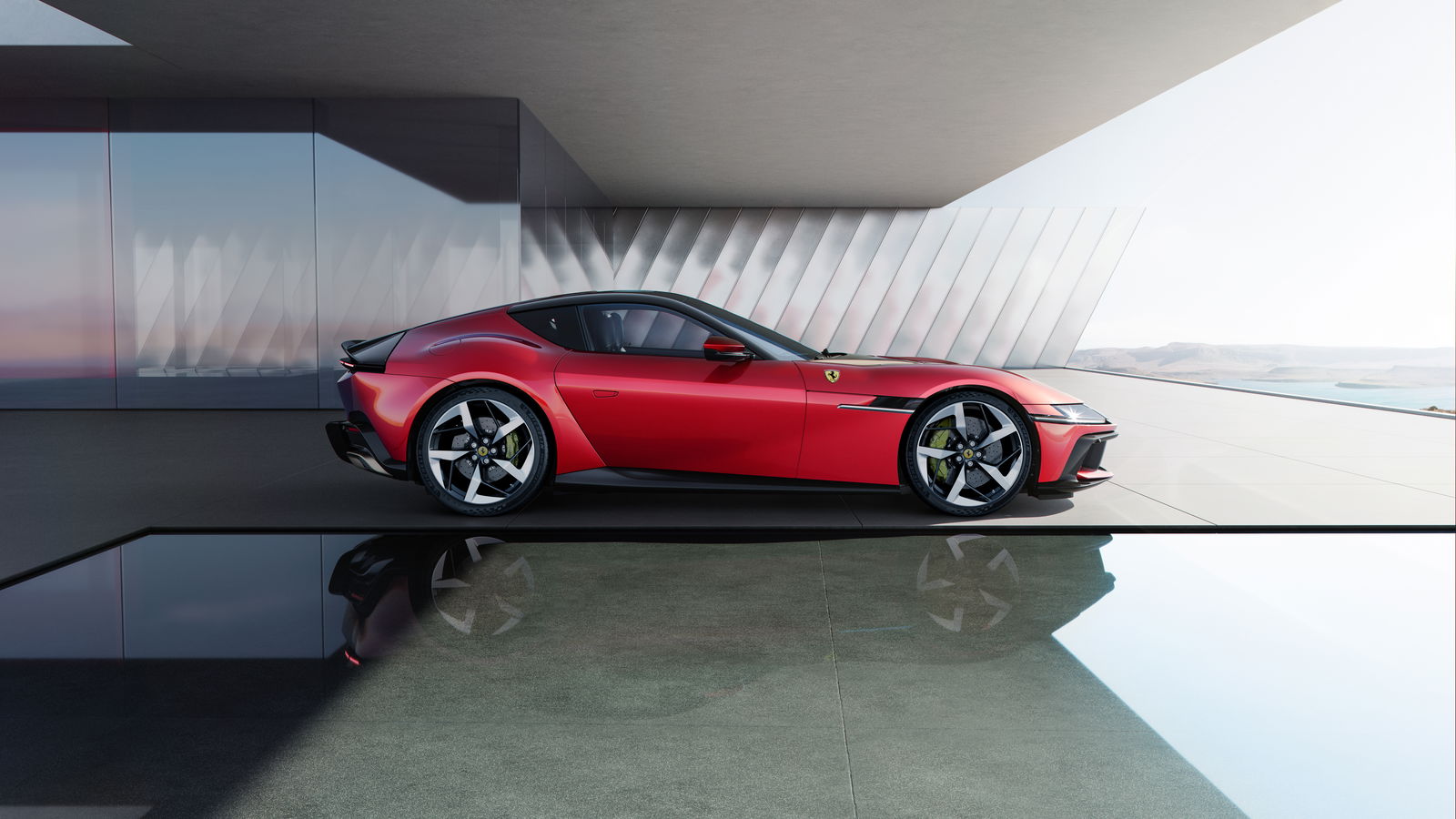
And now there’s this, the latest in a long line of front-engined V12 Ferrari GTs that stretches right the way back to the 1940s (albeit broken when everything went mid-engined in for a time in the ’80s and ’90s).
So what is the engine that Ferrari’s so proud of it’s named the entire car after it? It’s an updated version of the 6.5-litre, naturally-aspirated V12 that powered the outgoing 812. It’s producing 820bhp – with zero assistance from turbochargers or electrification – and 500lb ft. New conrods and pistons mean it’ll now redline at a scintillating 9500rpm. The gearbox is an eight-speed dual-clutch.
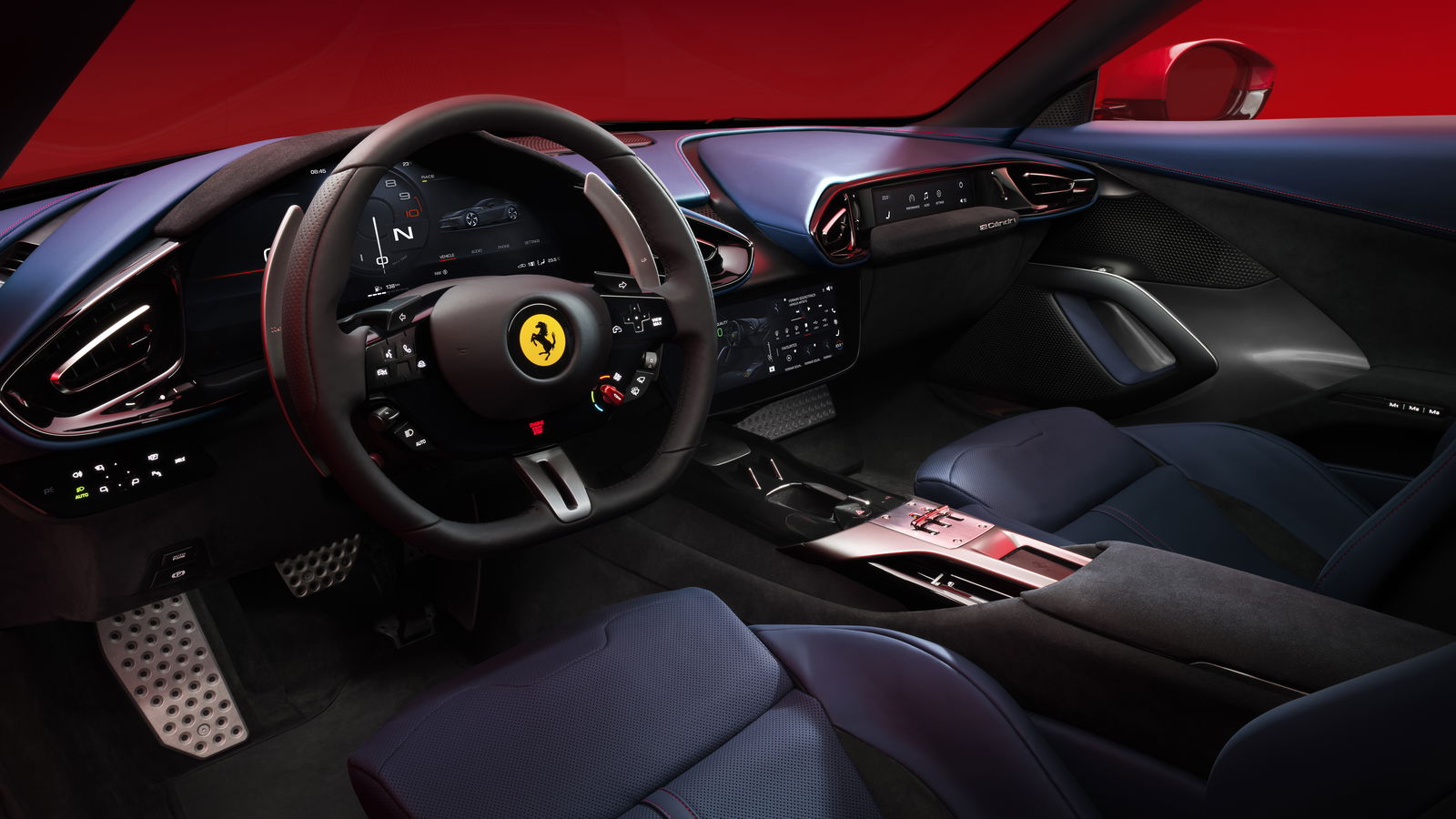
In something with a claimed dry weight of 1565kg (assuming you’ve specced all the carbon fibre possible), that’s enough to get the 12Cilindri to 62mph in 2.9 seconds, and up to a top speed of 217mph.
Apparently, it was no mean feat getting this engine out of the door in 2024. There are ever stricter emissions rules, and noise regulations mean it’s had to be limited to 72 decibels, which the good people at the Decibel Pro app reckon is somewhere between a washing machine and a kitchen blender. Ferrari says greater effort has been put into piping sound in for the driver to compensate, something we’re pretty used to in new cars at this point.
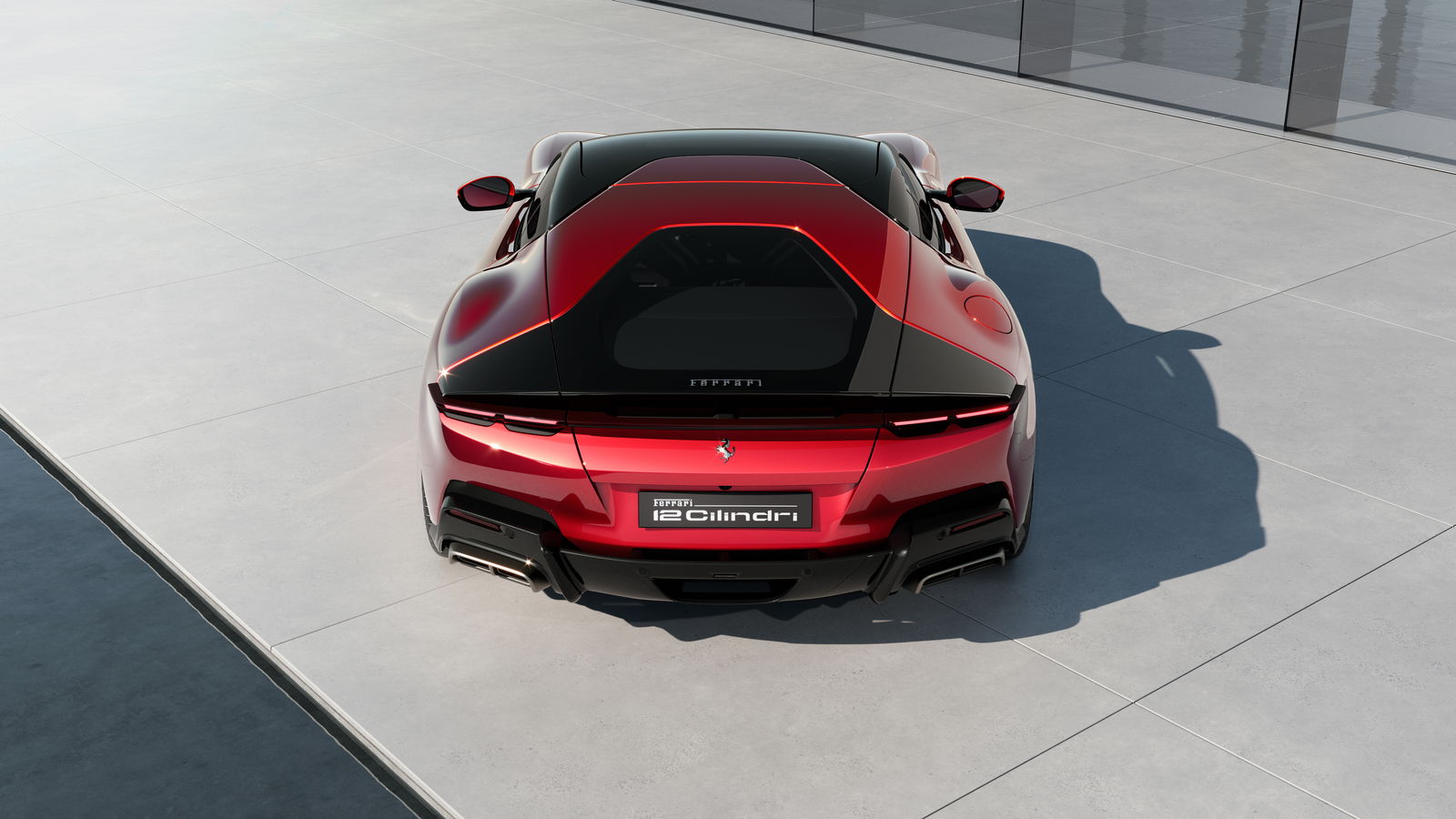
Helping keep all this power in check is Ferrari’s latest suite of driver assists, including the eighth generation of its Side Slip Control system, independent four-wheel steering, and a new system called Aspirated Torque Shaping, which controls power delivery to make it as smooth and linear as possible.
Some bold, consciously retro design choices have been made with the 12Cilindri. Most obvious is that black front ‘mask’, which is a clear nod to the wraparound headlight unit from the simply gorgeous 365 GTB/4 'Daytona' of the 1960s. The bonnet, meanwhile, is a clamshell unit that lifts up for an unobstructed view of the 12Cilindri’s real centrepiece. While it looks as if the rear windscreen begins to flow down the flanks of the car, those extensions sitting on each rear corner are actually active aero devices that lift between 37 and 186mph to provide up to 50kg of extra downforce at the back. There’s lots of other clever aero stuff going on, too, including several underbody vortex generators.
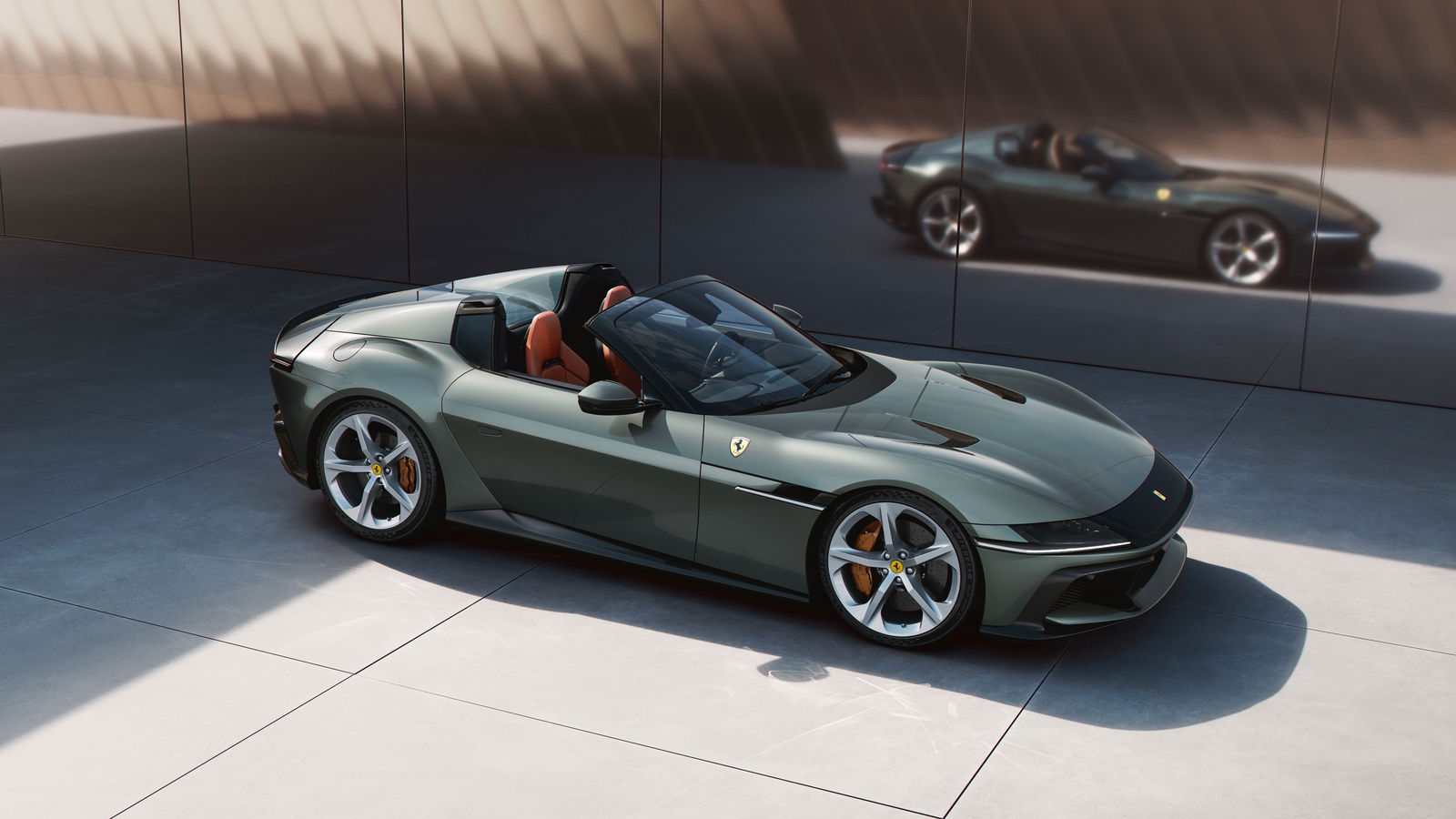
The interior’s been given a much-needed refresh, bringing it more in line with the likes of the Roma and 296. There’s a grand total of three screens: the driver gets a 15.6-inch unit, then there’s a central 10.3-inch infotainment screen and an 8.8-inch item just for the passenger to see at precisely what speed enjoyment becomes white knuckle terror. Slightly less welcome is the introduction of capacitive buttons on the steering wheel, although Ferrari says they’re indented for ease of use.
Available as either a coupe or a folding hardtop Spider, the 12Cilindri is a car we were genuinely unsure would ever exist a few years ago, and it’s laudable that Ferrari has worked as hard as it has to keep its naturally aspirated V12 alive. How much longer it’ll stick around we don’t know, but at least we have this car to enjoy for now. Most of us will just have to watch on from the outside, though: in Europe, prices start at €395,000 for the coupe and €435,000 for the Spider – around £338,000 and £372,000, respectively. But can you really put a price on a 9500rpm V12?
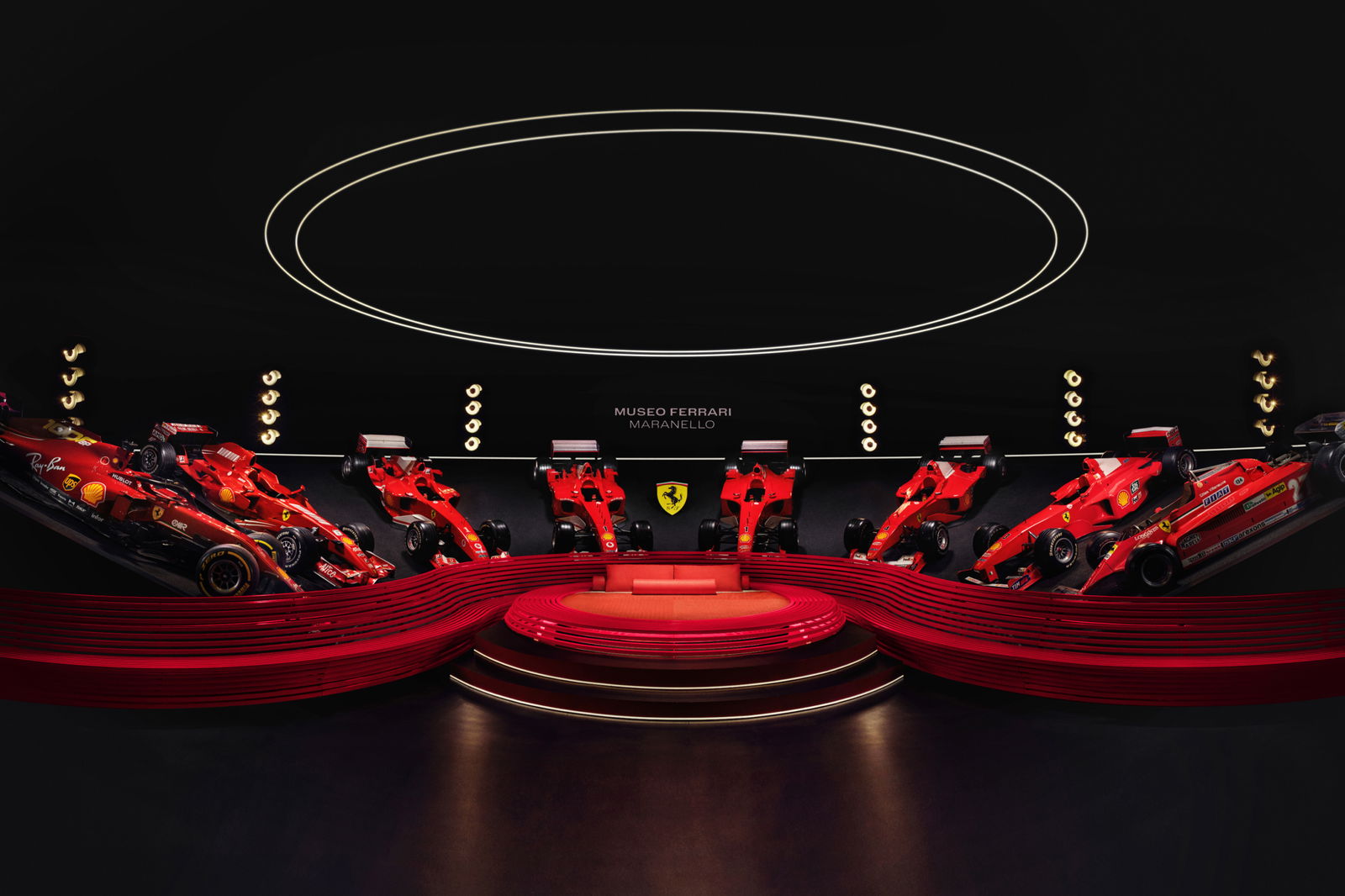
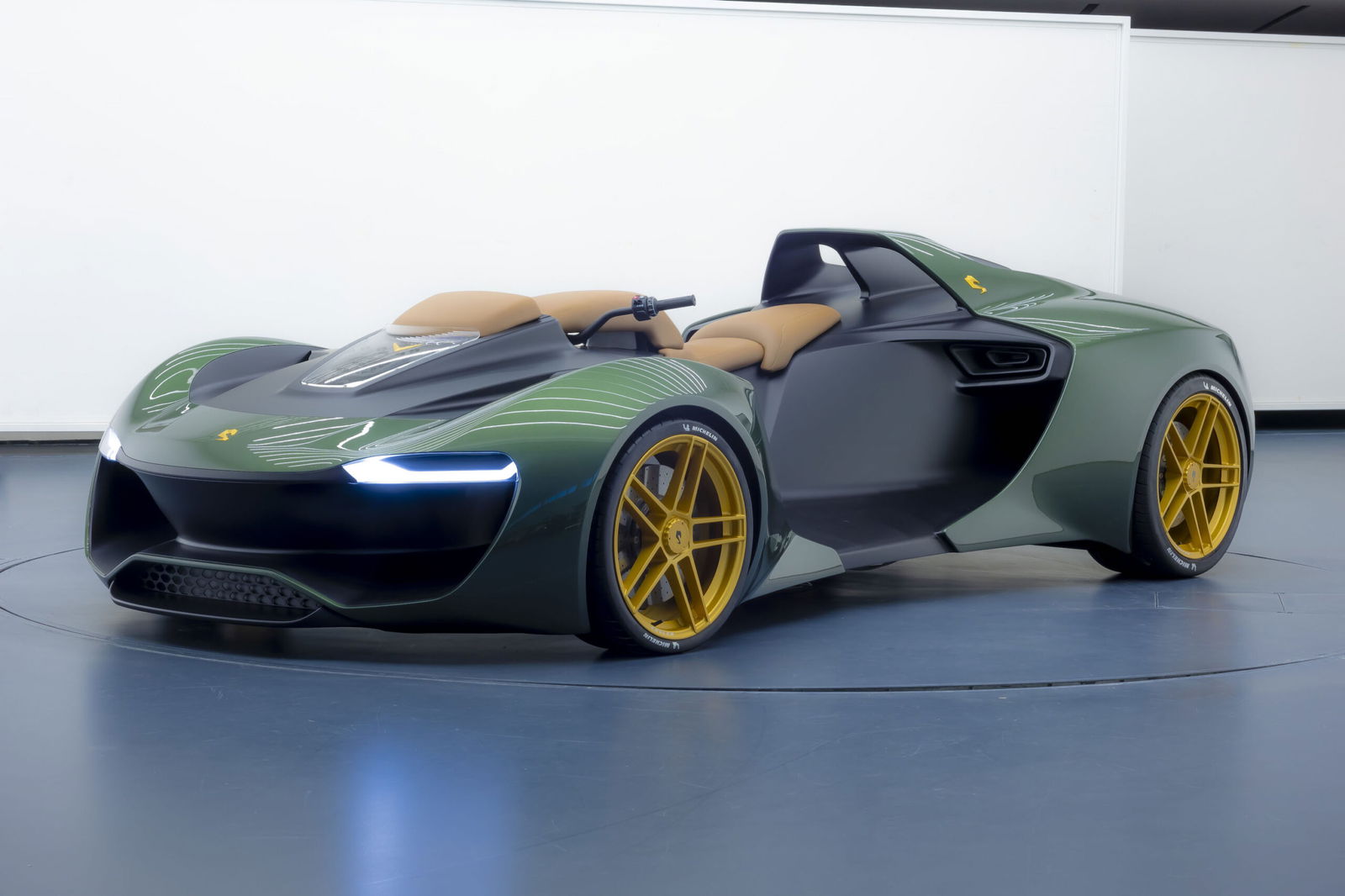

Comments